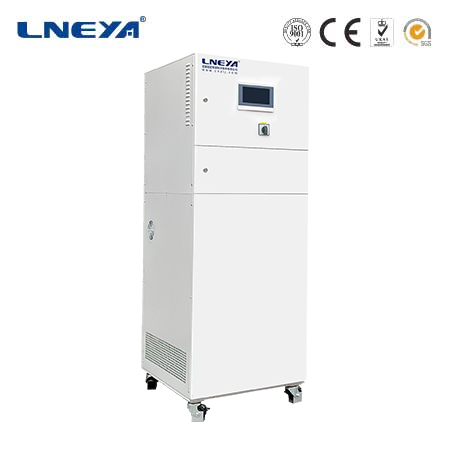chiller operation
The Operation of Chiller Systems
Chiller systems are essential in various industries for cooling applications, and their operation is based on well-established refrigeration principles. The process starts with a low-pressure refrigerant entering the evaporator, where it absorbs heat from the process fluid, causing it to evaporate into a gas. This gaseous refrigerant then moves to the compressor, which increases its pressure.

The high-pressure refrigerant gas then flows into the condenser, where it releases heat, either to cooling water from a cooling tower or to the surrounding air in the case of air-cooled chillers. The condensed refrigerant, now a high-pressure liquid, passes through an expansion valve, which reduces its pressure and initiates the cooling cycle anew.
Components of a Chiller System
The central components of a chiller system include:
Condenser: Removes heat from the refrigerant, either through water circulation with a cooling tower or by air passage in air-cooled chillers.
Compressor: Drives the refrigerant around the system, creating the necessary pressure gradient for the cooling process. Various types of compressors are used, including centrifugal, screw, and reciprocating.
Evaporator: Located between the expansion valve and the condenser, it absorbs heat from the process fluid into the circulating refrigerant.

Expansion Valves: Regulate the flow of refrigerant, reducing pressure, and facilitating heat transfer in the evaporator.
Power and Control Units: Manage electrical energy flow and system operations, with components like starters, monitoring panels, and circuit breakers. Control panels allow operators to adjust settings for optimal thermal control.
Types of Chillers
The main types of chillers in use today include:
Air-Cooled Chillers: Use ambient air to dissipate heat, suitable for environments with limited water resources.
Water-Cooled Chillers: Utilize water from an external cooling tower for heat rejection, providing more consistent performance across ambient temperatures.
Applications of Chiller Systems
Chiller systems are used in a wide range of applications:
Industrial Processes: Maintain optimal temperatures for processes like plastic molding, pharmaceutical manufacturing, and food processing.
Air Conditioning: Chillers are used in HVAC systems to cool and dehumidify air in commercial buildings, malls, data centers, and residential complexes.
Data Centers: Regulate temperature for the seamless operation of servers and data infrastructure.

Medical Applications: Used for temperature-controlled storage of medicines, medical equipment, and in medical imaging processes.
Optimization of Chiller Operation
Efficiency in chiller operation is crucial, as chillers can account for 30-40% of the energy consumption in HVAC systems. Strategies for optimizing operation include stochastic optimized chiller operation based on multi-objective optimization considering measurement uncertainty. These strategies aim to enhance energy efficiency by distributing the chiller cooling load according to measured cooling system data, which can vary between different buildings and their requirements for energy-saving versus indoor comfort.
Conclusion
Chiller operation is a critical aspect of modern industrial and commercial processes, providing precise temperature control and ensuring efficient operations. As technology advances, the focus on energy efficiency and sustainability in chiller systems continues to grow, with innovative operation strategies and technological improvements shaping the future of this essential equipment.
Related recommendations
heating and cooling control systems
343Introduction to Heating and Cooling Control SystemsHeating and cooling control systems are critical components of modern HVAC systems, allowing for precise temperature regulation and energy manage...
View detailsheating and cooling temperatures
353Introduction to Heating and Cooling TemperaturesMaintaining comfortable indoor temperatures is crucial for occupant well-being and energy efficiency in residential, commercial, and industrial sett...
View detailsportable air chiller unit
292What is a Portable Air Chiller Unit? A portable air chiller unit is a compact and mobile cooling system designed to provide efficient temperature control in various environments. These units ar...
View detailsconstant temperature water heater
295Introduction to Constant Temperature Water HeatersConstant temperature water heaters, also known as water baths, are vital in laboratories for maintaining a consistent temperature for processes su...
View details
 LNEYA Thermal Test Chillers
LNEYA Thermal Test Chillers







HelloPlease log in